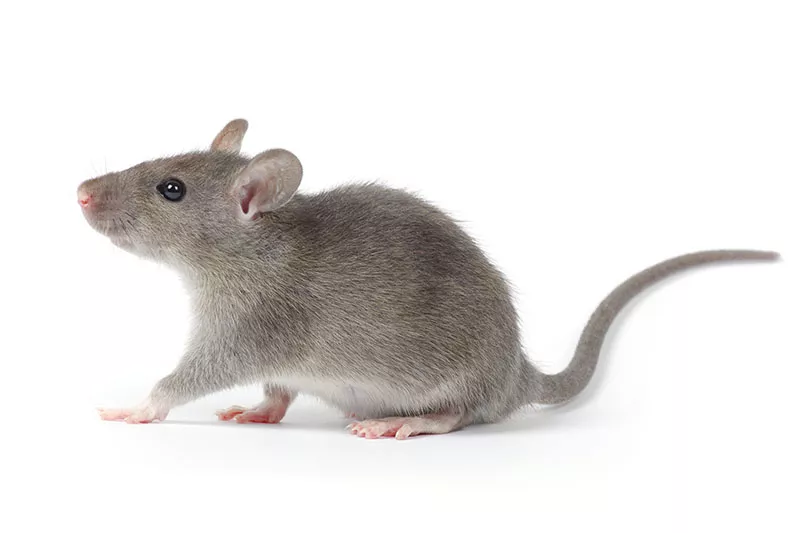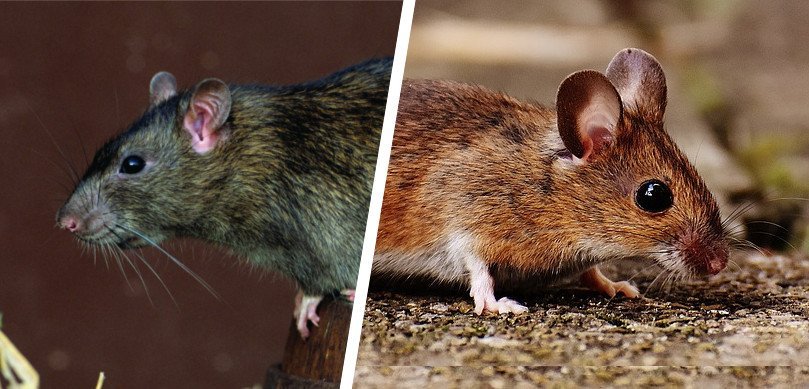
Rats and mice are two commonly found pests that often get mixed up due to their similar appearance. However, they have distinct differences when it comes to their behavior and characteristics. Understanding these differences can help us better comprehend and address the challenges they pose. In this article, we will delve deep into the unique traits, adaptations, and survival strategies of both rats and mice. Let's begin by exploring the behavior and characteristics of rats.
Rats are highly intelligent creatures known for their problem-solving abilities. They possess exceptional learning capabilities and can adapt quickly to changing environments. Their sharp memory enables them to remember complex routes and locations, which aids them in finding food and evading predators. Moreover, rats exhibit social behavior within their colonies, forming hierarchical structures and displaying cooperative interactions.
One fascinating aspect of rat behavior is their ability to communicate with each other. Rats use a combination of vocalizations, body language, and scent marking to convey messages within their colony. They emit ultrasonic vocalizations that are beyond the range of human hearing, allowing them to communicate discreetly. Additionally, rats use their whiskers to sense their surroundings, providing them with valuable information about their environment and potential threats.
Rats also have an impressive sense of smell, which they use for various purposes. They can detect food from a distance and are attracted to the scent of certain substances. This keen sense of smell also helps them navigate their environment and locate potential mates. Furthermore, rats have a highly developed sense of touch, particularly in their paws. They use their sensitive paws to explore their surroundings, manipulate objects, and even groom themselves.

Rats are incredibly adaptable and can thrive in various environments. Whether living in urban areas or rural settings, they can utilize available resources efficiently. Their flexible diet includes seeds, nuts, grains, fruits, and even human food waste. This adaptability allows them to survive in diverse habitats, from city sewers to agricultural fields.
In urban environments, rats have learned to take advantage of human structures and resources. They can squeeze through small openings and climb walls, enabling them to access food sources in buildings and garbage bins. Rats are also excellent swimmers, which allows them to navigate through sewer systems and other waterways in search of food and shelter.
In rural settings, rats have adapted to living alongside agricultural practices. They can feed on crops such as grains and fruits, causing significant damage to farmers' yields. However, rats also play a role in seed dispersal, as they may carry seeds to new locations, aiding in the growth and diversity of plant species.
Overall, rats' ability to adapt to different environments is a testament to their resilience and survival instincts. Their intelligence, flexibility, and resourcefulness make them highly successful in a wide range of habitats.
Mice, like rats, possess remarkable intelligence and problem-solving skills. However, their small size and agility make them even more elusive and adept at escaping predators. They have an excellent sense of hearing and smell, enabling them to detect potential dangers and find food sources with great precision. Mice are known to be curious creatures, frequently exploring their surroundings.
When it comes to intelligence, mice have been the subjects of numerous scientific studies. Researchers have found that mice are capable of learning and remembering complex mazes, demonstrating their cognitive abilities. In fact, their problem-solving skills have been compared to those of primates, showcasing their impressive mental capabilities.
Aside from their intelligence, mice also exhibit social behavior. They live in colonies, forming intricate social structures. Within these colonies, mice communicate with each other through a variety of vocalizations, ultrasonic vocalizations, and body language. Their social interactions are not only fascinating to observe but also provide valuable insights into their complex social dynamics.
Similar to rats, mice are highly adaptable to different environments. They can thrive in a variety of settings, including fields, forests, and human dwellings. Mice have a broad dietary range and are omnivorous, consuming seeds, fruits, insects, and small invertebrates. Their ability to reproduce rapidly further aids them in colonizing new territories and ensuring the survival of their species.
One of the key factors that contribute to the success of mice in various habitats is their reproductive capabilities. Female mice can reproduce throughout the year, with each litter consisting of multiple offspring. This high reproductive rate allows mice populations to grow rapidly, ensuring their survival even in challenging environments.
Another interesting aspect of mouse behavior is their ability to navigate complex environments. Studies have shown that mice possess an innate sense of direction and can create mental maps of their surroundings. They use landmarks and environmental cues to navigate and find their way back to their nests. This remarkable navigational ability further enhances their chances of survival in different habitats.
Furthermore, mice have developed various adaptations to avoid predators. Their small size allows them to squeeze through tight spaces, making it easier for them to escape from potential threats. Additionally, mice have evolved a keen sense of danger, enabling them to quickly detect predators and take evasive actions. These adaptations, combined with their agility and intelligence, make mice highly successful in evading predators and ensuring their survival in diverse habitats.

Rats and mice share several characteristics that contribute to their success as urban pests. Both species are nocturnal, meaning they are primarily active during the night. They rely on their agility and quick reflexes to avoid predators and capture prey. Additionally, rats and mice possess sharp incisors that continuously grow, necessitating constant gnawing to wear them down.
One interesting similarity between rats and mice is their ability to adapt to a wide range of environments. Whether it's a bustling city or a quiet countryside, these rodents have proven to be highly adaptable and resourceful. They can find shelter in various locations, such as burrows, buildings, or even inside walls, making them difficult to eradicate.
Furthermore, both rats and mice are known for their exceptional ability to reproduce rapidly. They have short breeding cycles and can produce multiple litters in a single year. This reproductive advantage allows their populations to grow quickly, making them a persistent challenge for pest control professionals.

These differences in behavior and reproductive patterns can have significant implications for pest management strategies. For example, the cautious nature of rats may require the use of different baiting techniques compared to mice, who are more likely to explore and consume new food sources. Additionally, the rapid reproductive cycle of mice may necessitate more frequent monitoring and control measures to prevent a population explosion.
It is also worth noting that rats and mice have different dietary preferences. While both species are omnivorous, rats have a more varied diet and can consume a wider range of food sources. Mice, on the other hand, have a preference for grains and seeds, making them particularly troublesome in agricultural settings.
In conclusion, while rats and mice share certain behavioral traits and characteristics, they also possess distinct differences that contribute to their survival and success in various environments. Understanding these differences is crucial for effective pest management strategies and preserving the delicate balance of ecosystems where these creatures coexist.